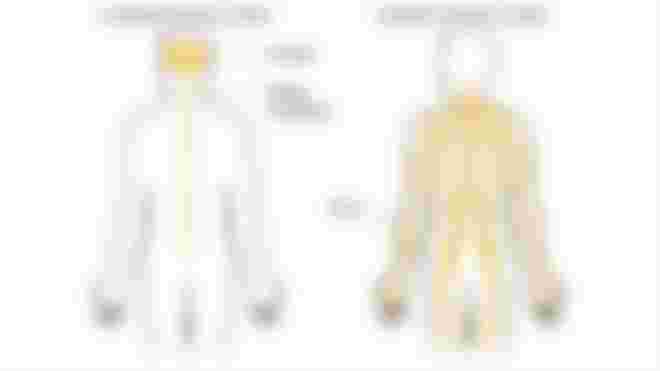Polyneuropathy is a disorder that results from damage to peripheral nerves. Peripheral nerves connect the central nervous system, or brain and spinal cord, with the rest of the body.
It is a diffuse disorder and is not limited to individual nerves or individual limbs.

Polyneuropathy occurs mainly on the legs, less often on the hands, and mostly occurs symmetrically, ie involving both legs or arms.
The disorder is difficult to treat, but therapies can stop its development and alleviate the symptoms.
Causes of polyneuropathy
The causes of polyneuropathy can be known, unknown, hereditary or acquired.
Possible causes are:
metabolic disorders (diabetes, vitamin B12 deficiency, liver failure),
harmful substances (lead toxicity),
taking certain medications (cytostatics),
tick bite (Lyme disease),
malignant diseases,
porphyria,
Guillain-Barré syndrome,
viral infections - AIDS.
Exposure to lead or certain medications (such as those against leprosy or pneumonia) can damage peripheral nerves and lead to polyneuropathy. In these cases, it is important to refrain from using these substances immediately.
Diabetes is a common source of polyneuropathy, and can cause complete loss of sensation in the arms or legs and even open wounds on the body.
A tick bite can infect a person with Borrelia burgdorferi, which causes flu-like symptoms, accompanied by pain in the muscles and joints, and can also damage nerves and lead to polyneuropathy, called Lyme disease.

Porphyrias include diseases that result from genetic defects and can include polyneuropathy.
Certain autoimmune diseases such as Guillain-Barré syndrome can also be a trigger for peripheral nervous system damage.
Polyneuropathy - symptoms
People usually complain of the following symptoms:
symmetrical changes in sensation (tingling and / or weakened sensation),
symmetrical changes in motor skills (weakness and / or atrophy of the lower leg muscles),
feeling numb and burning,
tightness in the feet or hands,
muscle weakness,
pain and cramps in the lower legs,
moderate loss of muscle mass in the legs.

Symptoms develop gradually, and at an advanced stage there may be difficulty walking.
When sensory fibers are damaged, there are feelings of tingling, burning, stinging and tightening of the limbs. The most pronounced symptoms are on the ends of the limbs, ie on the feet and on the hands. They gradually spread towards the torso, but most often they do not cross the knee or elbow. The pain is expressed at rest, and appears spontaneously or after physical exertion.
Motor symptoms are most pronounced in the lower limbs with frequent painful cramps in the leaves. Atrophy of the muscles of the lower leg and foot occurs due to the deterioration of their fibers. Due to the loss of muscle mass, visible aesthetic changes can occur on the lower legs ("family legs").
All of these changes can lead to deformities or bulges in the feet and limited mobility of the ankles, which is why it is necessary to diagnose the disorder as soon as possible and start treatment.
The clinical picture depends on the pattern and extent of the pathological process of the disorder.
Polyneuropathy - treatment
In the case of suspected polyneuropathy, electrodiagnostic tests are first performed to determine which nerve structures are affected by the disorder and how advanced the disease is.
Also, the doctor will try to determine the cause of the disease based on tests and clinical picture.
Electromyoneurography is crucial in the diagnosis of polyneuropathy, by which the analysis of nerves determines the form of damage and determines the degree of damage.

After a detailed diagnosis, the course of treatment is decided; if possible, the cause of the polyneuropathy should be removed immediately, and then the symptoms and progression of the disease should be alleviated.
Treatment is based on drug administration and physical therapy.
If the cause is a certain drug or toxin, it is necessary to eliminate it immediately and correct the vitamin deficiency. This can stop the progression of the disease, but recovery is almost always slow and incomplete.
In order to prevent disability, regular physical and occupational therapy is extremely important.
In case of pain and burning sensation, the doctor will prescribe medications that will alleviate these discomforts.
If polyneuropathy is detected in time and the cause can be removed, it takes 6-12 months for the nerves to regenerate and the symptoms of the disease to subside. There are also polyneuropathy whose symptoms cannot completely disappear, and the goal of therapy is to alleviate them.



